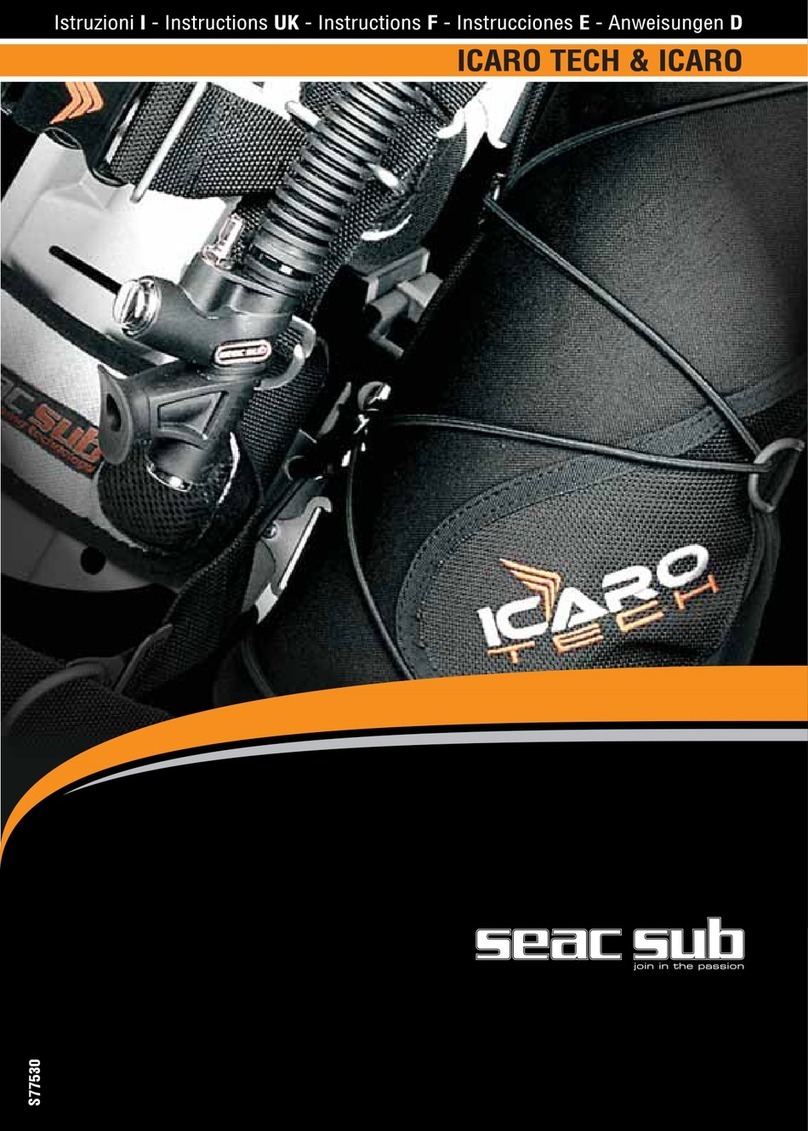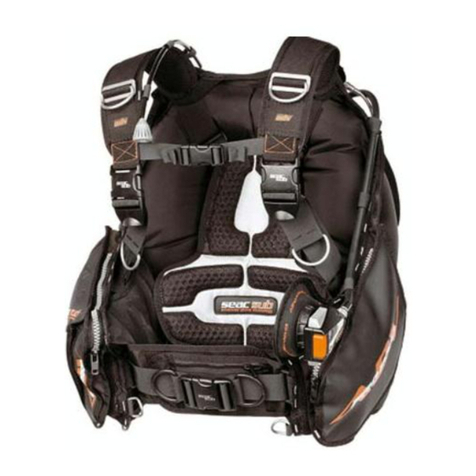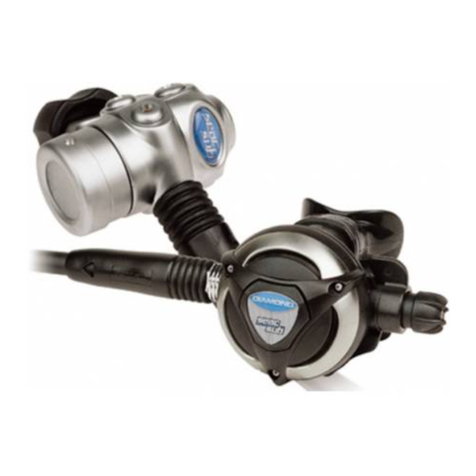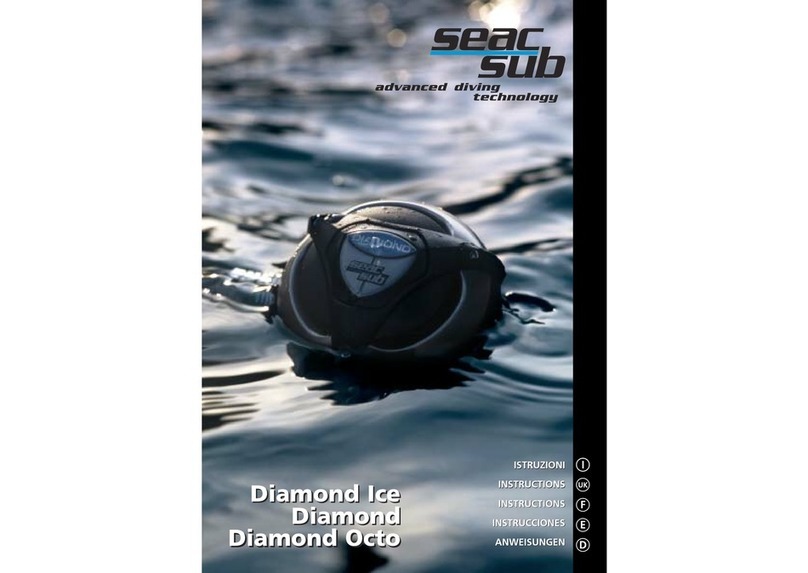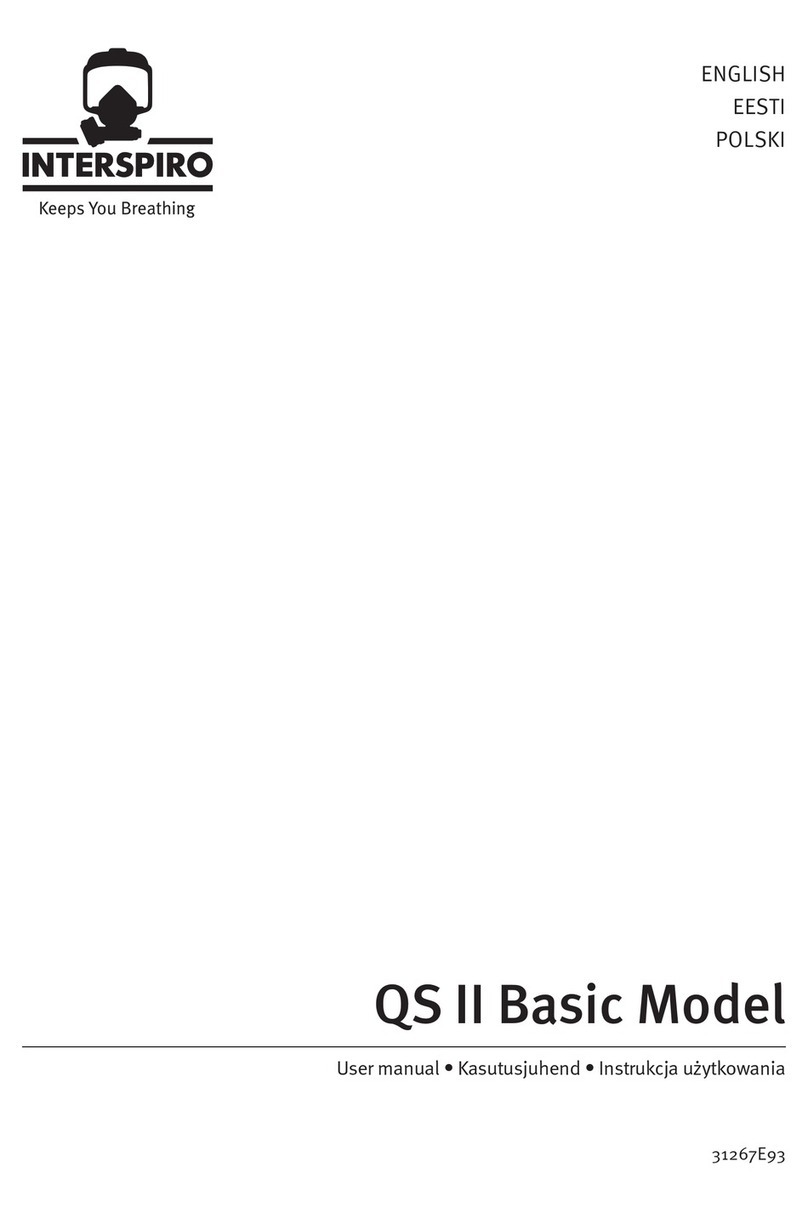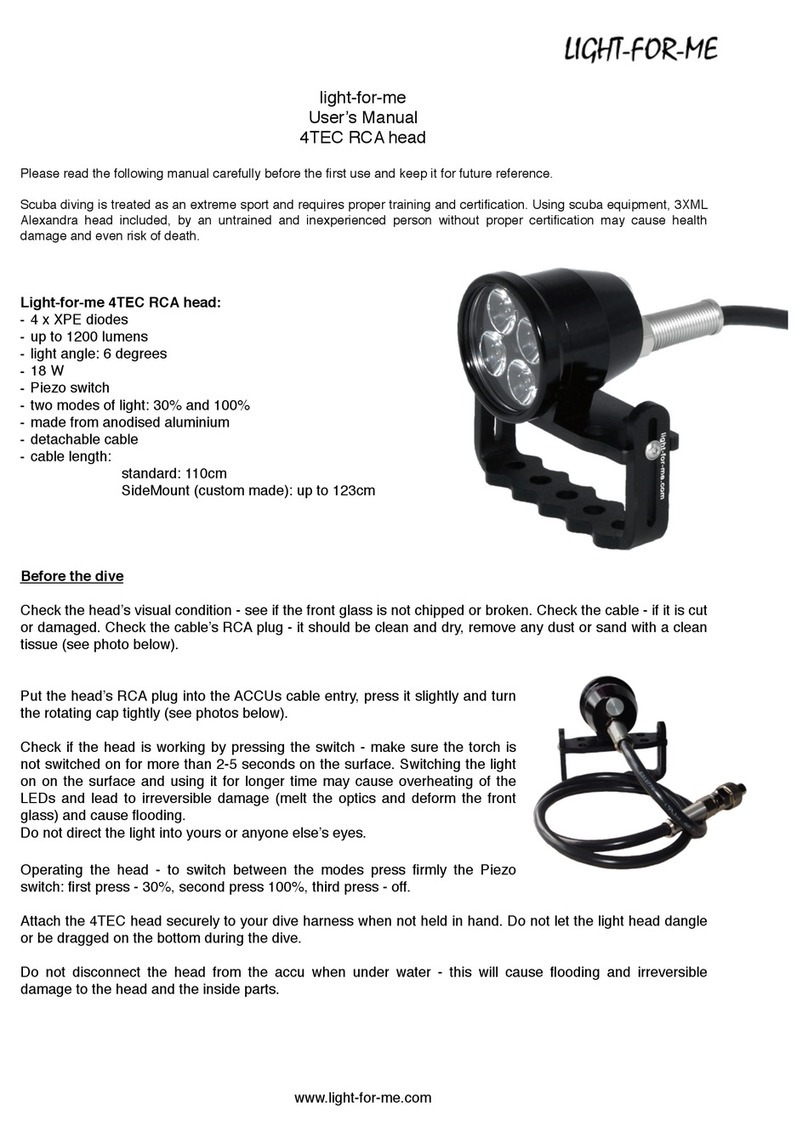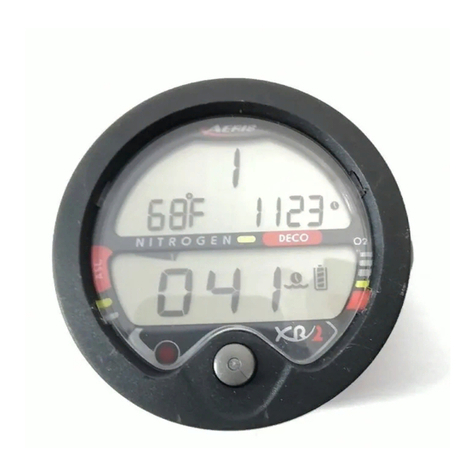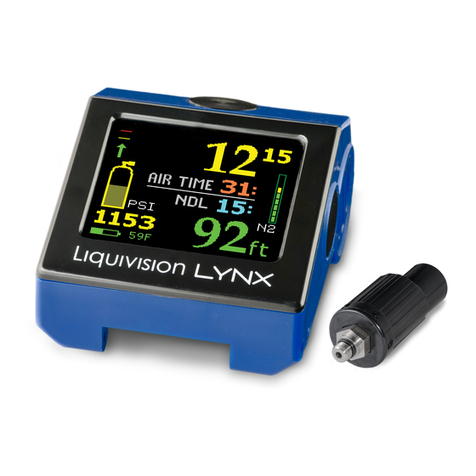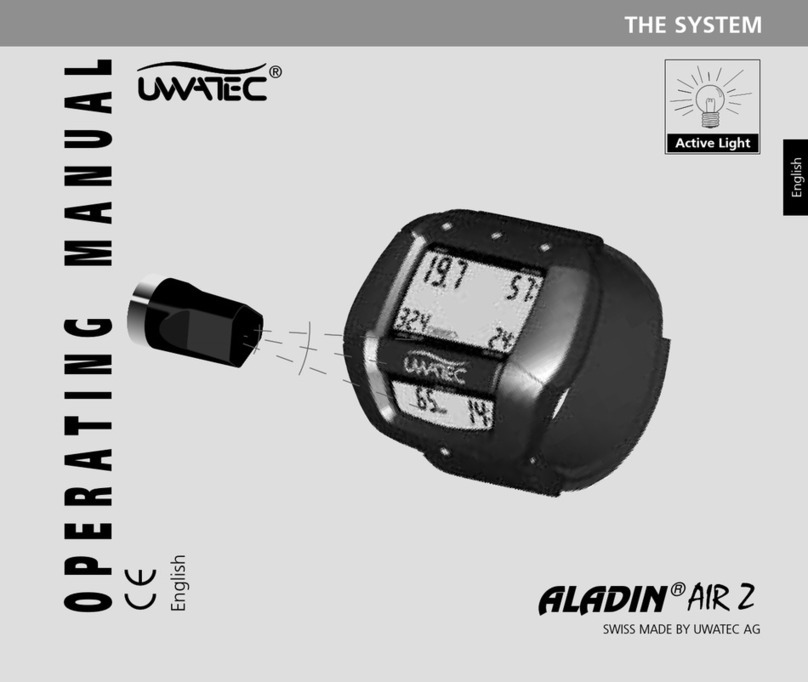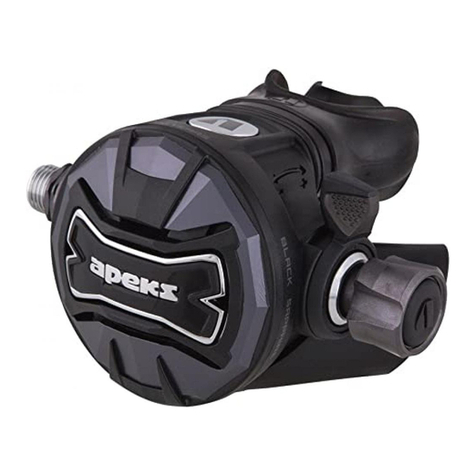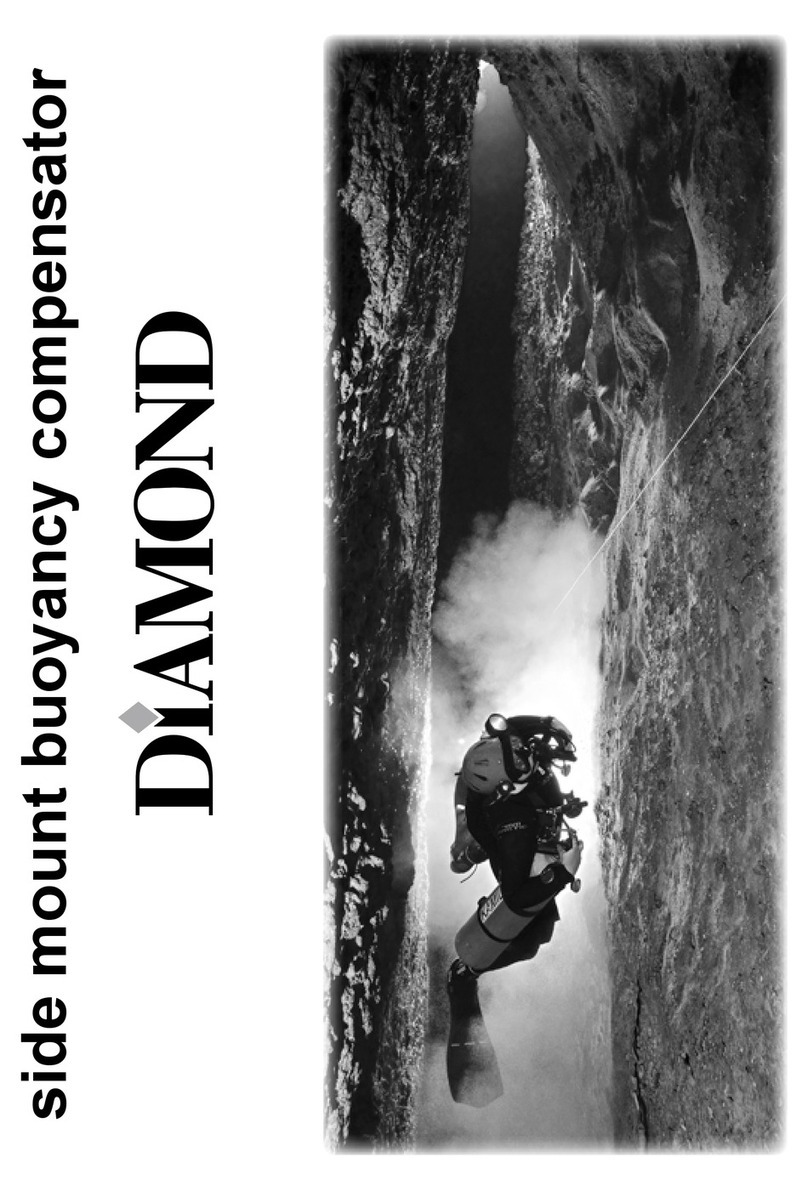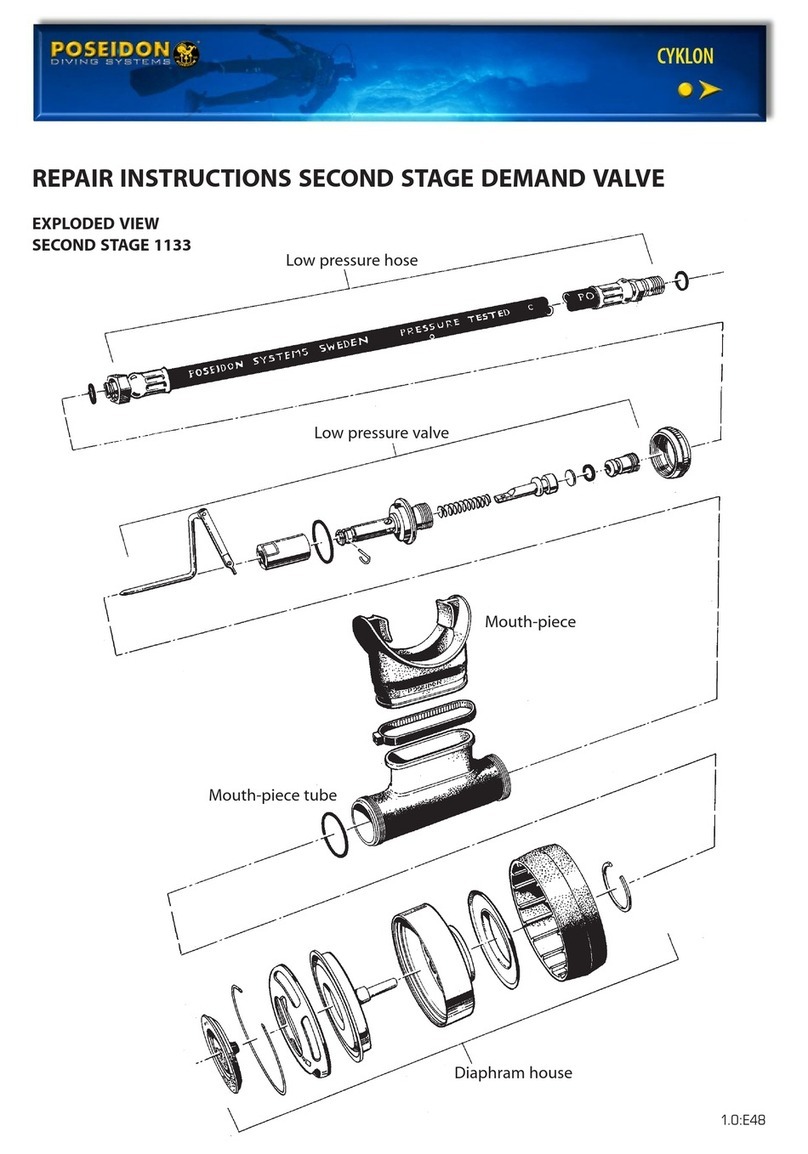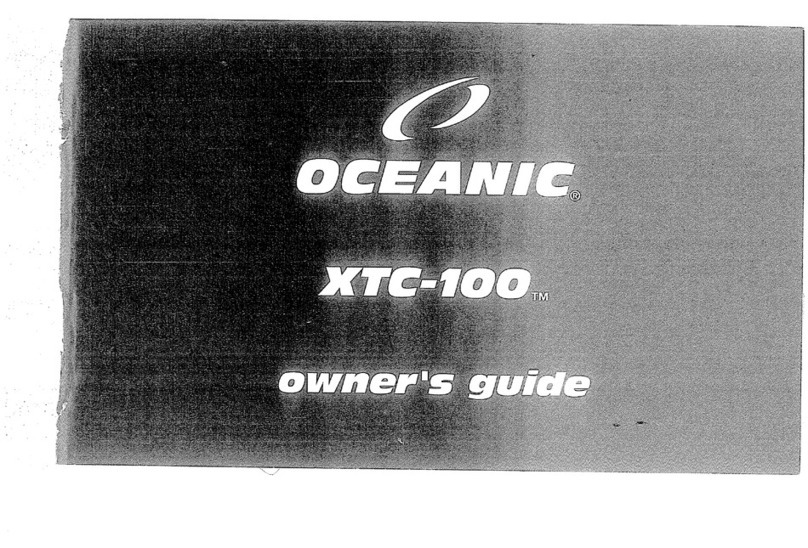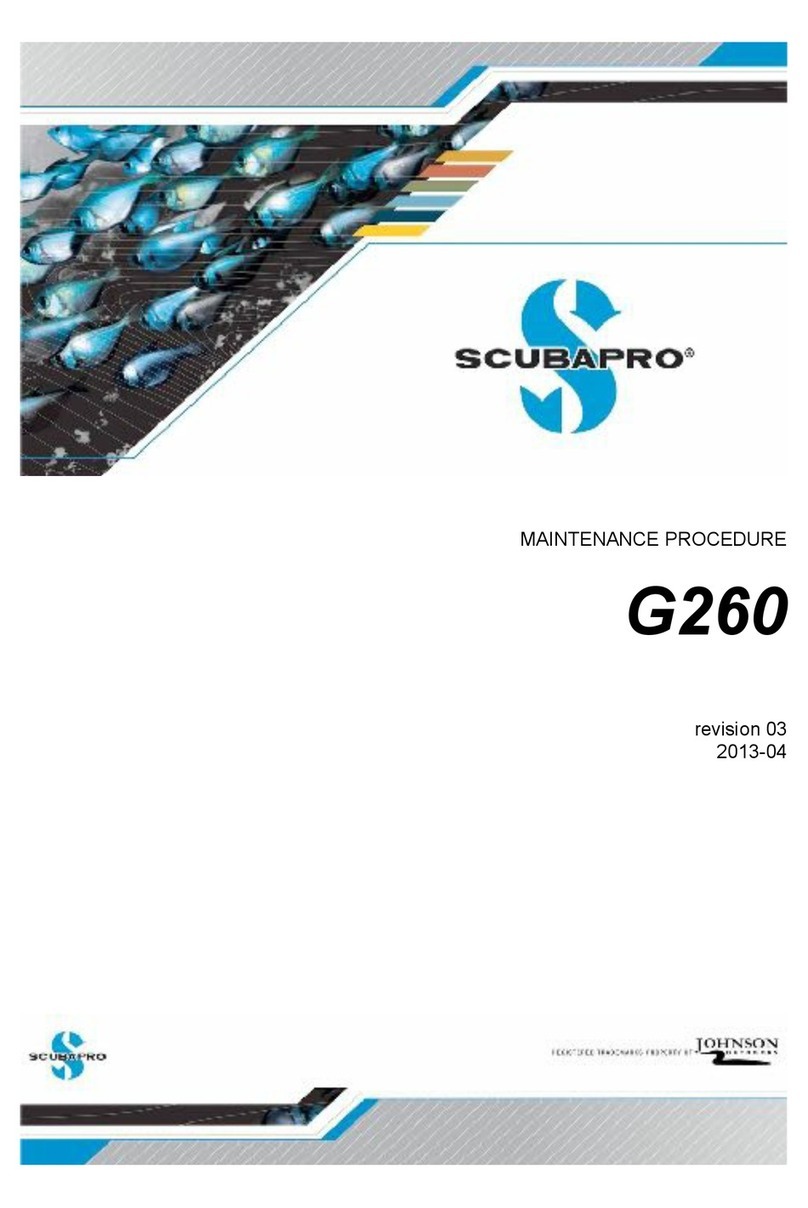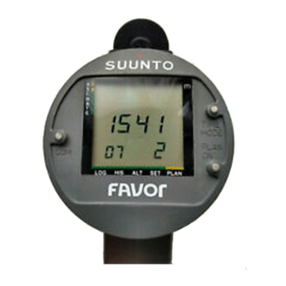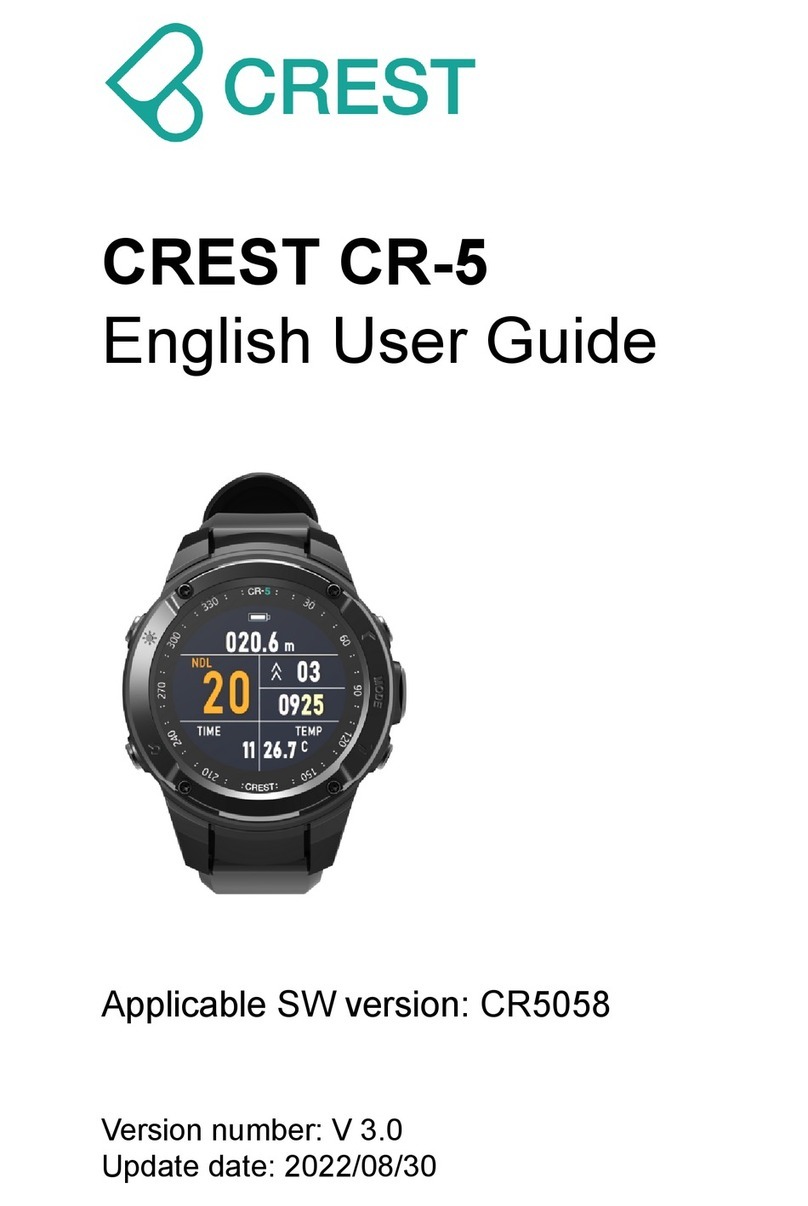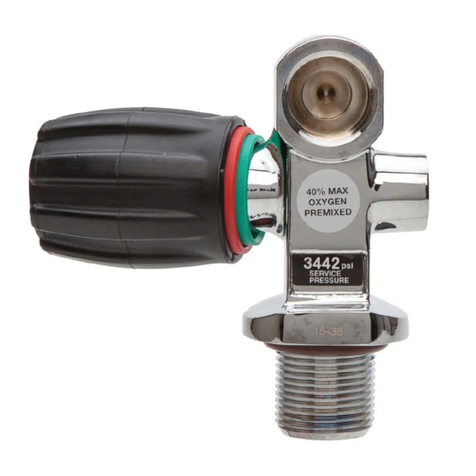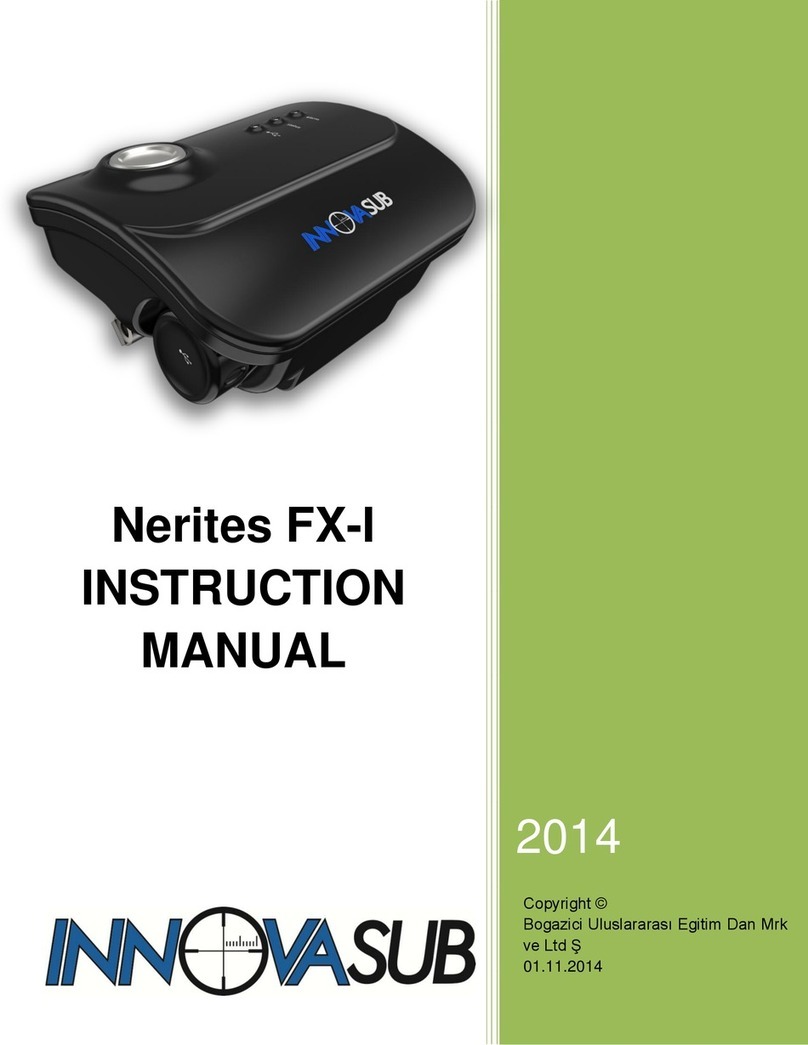Seac Sub N-Synchro User manual

excellence in regulators


EROGATORI
REGULATORS
DETENDEUR
REGULADOR
ATEMREGLER
N-Synchro
N-Synchro Octo
SEACSUB S.p.A.
Via D. Norero, 29
16040 San Colombano Certenoli (GE), Italy
Tel. +39 (0185) 356301
Fax. +39 (0185) 356300
Info: [email protected]
Web Page: www.seacsub.com
EN13949:2003 - EN 250: 2000

INDEX
ITALIANO pag. 3
ENGLISH pag. 11
FRANÇAIS pag. 19
ESPANOL pag. 27
DEUTSCH pag. 35
ESPLOSI EROGATORI - TECHNICAL DRAWNG pag. 43

ITALIANO
3
Attenzione!
Leggere l’intero manuale prima di utilizzare
questa attrezzatura!
Questo libretto non è un manuale di im-
mersione. Prima di utilizzare l’erogatore o
qualsiasi altro prodotto per l’immersione su-
bacquea è necessario seguire un corso tenuto
da istruttori qualificati e conseguire il relativo
brevetto. L’uso dell’attrezzatura subacquea
da parte di persone non brevettate è peri-
coloso e può essere causa di gravi incidenti
anche mortali per il subacqueo ed i suoi ac-
compagnatori.
Questo erogatore subacqueo è stato certi-
ficato secondo la norma EN 13949:2003 che
prevede una lunga serie di test funzionali
fino alla profondità massima di 50 metri ed
alla temperatura di 2/4 gradi centigradi otte-
nendo la certificazione per l’uso in ossigeno
puro (100% 02).
Se non siete esperti nell’uso di questa appa-
recchiatura vi consigliamo di familiarizzare
con il suo funzionamento durante immersioni
di prova in bassa profondità e condizio-
ni favorevoli; eventualmente contattate un
istruttore qualificato per un corso di aggior-
namento.
Durante tutta la fase d’assemblaggio dei no-
stri erogatori sono stati attuati tutti gli accor-
gimenti possibili per fornire un prodotto alta-
mente affidabile nel tempo. Tali accorgimenti
possono però essere resi inefficienti qualora
l’utente non utilizzi l’erogatore in maniera
corretta e non provveda ad una adeguata
manutenzione. La Seacsub s.p.a. declina ogni
responsabilità per qualsiasi problema dovuto
alla mancata osservanza delle raccomanda-
zioni riportate nel presente libretto.
Per qualsiasi altro problema potete rivolgervi
al vostro negoziante di fiducia o direttamente
alla Seacsub s.p.a. Ogni intervento di ripa-
razione o manutenzione può essere svolto
unicamente da laboratori autorizzati dalla
Seacsub s.p.a.
Gli erogatori subacquei Seacsub nascono da
una ricerca portata a compimento in stret-
ta collaborazione con numerosi operatori
subacquei professionali. Gli aspetti innova-
tivi garantiscono un’affidabilità che rimane
inalterata anche dopo una lunga serie di
immersioni. Nello stesso tempo la facilità di
funzionamento permette una manutenzione
economica ed estremamente semplice.
Attenzione!
Se il vostro erogatore N-SYNCHRO dovesse
entrare in contatto con normale aria atmosfe-
rica o se sospettate che sia stato contaminato,
è assolutamente necessaria una completa
pulizia da effettuare presso un laboratorio
autorizzato dalla Seacsub s.p.a.
Per la vostra sicurezza e per ottenere le miglio-
ri prestazioni dal vostro erogatore N-SYNCHRO
abbiate cura:
Edi assicurarvi che la vostra attrezzatura sia
sempre tenuta pulita e esente da contatto
con ogni tipo di lubrificazione eccetto
quella espressamente dedicata per uso con
ossigeno
Edi acquistare i ricambi originali per NI-
TROX della Seacsub s.p.a.
Edi assicurarvi che la bombola e la rubinet-
teria siano ossigeno – compatibili e predi-
sposte per l’uso con ossigeno
Edi verificare che il rubinetto sia compati-
bile con il passo filettato del primo stadio
(26x2)
Edi aprire lentamente il rubinetto della bom-
bola
Edi far revisionare la vostra attrezzatura NI-
TROX da un laboratorio autorizzato dalla
Seacsub s.p.a. dopo 50/60 ore di uso
EVITATE ASSOLUTAMENTE:
Edi usare l’attrezzatura NITROX con norma-
le aria atmosferica
Edi collegare al vostro N-SYNCHRO fruste
o altri accessori che non siano predisposti
all’uso con 100% di ossigeno
MANUALE ISTRUZIONI EROGATORE
N-SYNCHRO / N-SYNCHRO OCTO

ITALIANO
4
ACCESSORI
Tutti gli accessori della linea Nitrox Seacsub
possono essere facilmente collegati al vostro
erogatore N-SYNCHRO. Per l’installazione la
Seacsub raccomanda di affidarsi alla professio-
nalità di un laboratorio autorizzato.
Tutti i nuovi prodotti Seacsub per uso in bassa
pressione (fino a 20 bar) possono essere usati,
senza modifiche, con miscele respiratorie con-
tenenti ossigeno fino al 40%.
Tutti i nuovi Giubbetti Equilibratori Seacsub
possono essere usati senza modifiche con
miscele respiratorie contenenti ossigeno fino
al 40%.
Qualsiasi altro accessorio o frusta predisposti
per uso con normale aria atmosferica
deve
obbligatoriamente
essere ripulito e sgrassato
per l’uso con NITROX, inoltre è opportuna la
sostituzione di tutte le O-ring con altrettante
ossigeno compatibili.
Nella collezione Nitrox Seacsub sono dispo-
nibili manometri con fondo scala a 400 bar
compatibili con ossigeno al 100% nelle versioni
manometro, manometro + profondimetro e
manometro + profondimetro + bussola.
Tutti i prodotti della linea Nitrox Seacsub pos-
sono essere usati solo dai subacquei che hanno
seguito un corso NITROX (miscela arricchita
d’ossigeno) tenuto da istruttori qualificati e
conseguito il relativo brevetto.
COMPATIBILITÀ
Solo i prodotti e parti di ricambio Seacsub
espressamente predisposti come
ossigeno -
compatibili
possono essere usati in alta pres-
sione (oltre 20 bar) con miscele respiratorie con
contenuto di ossigeno superiore al 21%.
Tutti i prodotti e le parti di ricambio della li-
nea Nitrox Seacsub sono compatibili con ogni
miscela respiratoria contenente ossigeno fino
al 100%.
LUBRIFICANTI
Se non durante l’annuale manutenzione non è
necessario lubrificare costantemente il primo ed
il secondo stadio dell’erogatore N-SYNCHRO.
Durante la manutenzione ordinaria annuale
utilizzare solo ed esclusivamente lubrificanti
ossigeno compatibili certificati per quello spe-
cifico utilizzo.
In ogni caso lubrificanti a base di silicone o
componenti minerali non devono assoluta-
mente essere utilizzati perché possono essere
causa di gravi danni a cose e persone
.
EROGATORE N-SYNCHRO
PRIMO STADIO
Primo stadio che affianca prestazioni di altissi-
mo livello ad una forma estremamente compat-
ta e razionale.
Il funzionamento è assicurato da un sistema
a membrana bilanciata che permette di man-
tenere la pressione intermedia assolutamente
costante sia rispetto alla pressione delle bom-
bole sia alla profondità raggiunta. Inoltre la
membrana isola completamente il cuore del-
l’erogatore dall’ambiente esterno, e garantisce
quindi una totale affidabilità per una lunga
serie di immersioni.
È realizzato in un monoblocco di ottone rama-
to, successivamente viene nichelato e cromato.
I particolari interni sono sempre in ottone cro-
mato con le molle in acciaio inox armonico e le
guarnizioni in teflon e O-ring VITON.
Cinque uscite di bassa pressione con filettatura
3/8” forniscono una pressione costante di 9,8
bar; abbiamo inoltre un’uscita di alta pressione
con filettatura 7/16” e forellino interno diame-
tro 0,20 mm. A questa uscita di alta pressione è
possibile raccordare un manometro subacqueo
di controllo mediante una frusta con terminale
maschio filettato 7/16”.
Attenzione!
utilizzate solamente manometri con filettatura
7/16”; evitate di interporre qualsiasi tipo di
raccordo tra il primo stadio ed il terminale della
frusta di alta pressione.
EROGATORE N-SYNCHRO –
N-SYNCHRO OCTO
SECONDO STADIO
Cassa realizzata in resina di sintesi, in materiale
particolarmente resistente ad urti ed abrasioni
ed inattaccabile da raggi ultravioletti ed agenti
chimici. Membrane in silicone. Componenti
interni in ottone cromato ed acciaio inox. Boc-
caglio in silicone anallergico. O-ring in VITON.
Il funzionamento è comandato da una valvo-
la di tipo “Downstream” affiancata ad una
canalizzazione che sfrutta “l’effetto Venturi”.
Questo significa che è la respirazione del su-
bacqueo a comandare in ogni momento l’ero-
gazione dell’aria: ad una respirazione normale
corrisponde un flusso molto dolce, mentre ad
una richiesta massiccia per affaticamento o alta
profondità l’erogazione sarà abbondante gra-
zie all’apporto dell’effetto Venturi.
Questo sistema garantisce un basso consumo di

ITALIANO
5
aria riducendo gli sprechi in quanto risponde
esattamente alla richiesta della respirazione;
inoltre dà la massima sicurezza in quanto può
funzionare anche in caso di sovrappressione del
primo stadio scaricando la pressione in eccesso
garantendo la continuità della respirazione.
La frusta dell’erogatore N-SYNCHRO è di tipo
standard (lunghezza mm. 760 e filettatura
3/8”).
Nella realizzazione di questo nuovo secondo
stadio abbiamo tenuto in considerazione ogni
suggerimento e commento che negli anni ab-
biamo ricevuto dai nostri diving centers e da
esperti subacquei di tutto il mondo.
Il secondo stadio N-SYNCHRO è realizzato cu-
rando in maniera capillare l’aspetto tecnico di
ogni suo singolo componente e cercando di
ottimizzare le prestazioni, il livello di sicurezza
e il comfort.
La particolare selezione dei materiali e un at-
tento studio dei componenti ha permesso di
ridurre lo sforzo respiratorio totale offrendo
una lineare e costante dolcezza respiratoria.
L’effetto Venturi che otteniamo dal secondo
stadio N-SYNCHRO permette di avere un flusso
d’aria graduale e abbondante, naturalmente il
flusso varia sempre in funzione della richiesta
inspiratoria.
Un deviatore di flusso orientabile dall’esterno
(Dive e Pre-Dive) permette di ottimizzare il flus-
so d’aria in funzione dell’esigenze respiratorie
di ogni singolo subacqueo.
Ogni singolo componente ha richiesto impor-
tanti studi e continui test di laboratorio al fine
di ottimizzare le prestazioni.
La forma asimmetrica della leva d’erogazione
(fig. 1) permette di ottenere una corsa prolun-
gata della stessa aumentando così le prestazio-
ni di portata dell’aria.
Ogni componente in metallo è perfettamente
cromato e lucidato in modo da ridurre gli attriti
e di conseguenza ridurre lo sforzo inspiratorio.
Il convogliatore esterno dell’aria (comunemen-
te chiamato baffo di scarico) dalla forma conca-
va permette l’alloggiamento del mento (fig. 2),
una parete divisoria (fig. 2b) posta all’interno
offre la caratteristica di proteggere la valvola
di scarico contro il rischio di incontrollate aper-
ture in caso d’immersioni in presenza di forti
correnti.
La valvola di scarico dalla forma ovale (fig. 3)
e dalle dimensioni maggiorate permette uno
scarico dell’aria repentino riducendo ai minimi
termini lo sforzo espiratorio.
Il nuovo boccaglio dalla forma anatomica
(fig. 4) si alloggia in maniera gradevole nella
bocca adattandosi a qualsiasi forma; questo
ottimo risultato è stato ottenuto grazie alla
FIG. 1
FIG. 2 FIG. 2b

ITALIANO
6
FIG. 3 FIG. 4
ricerca effettuata in campo odontotecnico ed ai
test che abbiamo effettuato su un campione di
diverse decine di subacquei. Il particolare grip
permette al boccaglio di rimanere alloggiato
in bocca anche in presenza di forti correnti.
La giusta durezza del silicone permette inoltre
di prolungare la vita del boccaglio nel tem-
po mantenendo inalterate le caratteristiche di
morbidezza e anatomicità.
Una ghiera interna blocca membrana (fig. 5)
mantiene la membrana ben fissata alla cassa
aumentando le prestazioni di sicurezza e di
funzionalità. Questo componente elimina il
rischio di perdita della membrana nel caso la
calotta esterna si allentasse inavvertitamente.
La calotta esterna (fig. 6) è realizzata in
gomma ad alta resistenza all’esposizione so-
lare e alla corrosione salina, la sua particolare
forma permette di individuare facilmente la
zona centrale agevolando così l’operazione di
pressione graduale della stessa per ottenere
l’erogazione manuale.
La membrana è realizzata in silicone trasparen-
te ad alto ritorno elastico mentre il piattello
centrale è realizzato in resina acetalica, questo
materiale plastico elimina qualsiasi attrito ridu-
cendo ulteriormente lo sforzo inspiratorio.
La cassa è realizzata in resina di sintesi, ma-
teriale particolarmente resistente ad urti ed
abrasioni ed inattaccabile dai raggi ultra-
violetti ed agenti chimici esterni, le O-ring
sono realizzate in gomma nitrilica suddivise in
diverse durezze (shore) in funzione dell’appli-
cazioni. I componenti interni sono realizzati
in ottone cromato ed acciaio inox.
Il funzionamento è di tipo “Downstream”
Questo sistema garantisce un basso consumo
di aria riducendo gli sprechi in quanto risponde
esattamente alla richiesta della respirazione.
Questo significa che è l’atto inspiratorio del
subacqueo a comandare in ogni momento
l’erogazione dell’aria: ad una inspirazione
normale corrisponde un flusso molto dolce,
mentre ad una richiesta massiccia per affa-
FIG. 5 FIG. 6

ITALIANO
ticamento o alta profondità l’erogazione è
abbondante grazie anche all’apporto dell’ef-
fetto Venturi.
In aggiunta questo sistema offre dei margini
di sicurezza anche in caso di sovrapressione
del primo stadio. Infatti nel caso si verificasse
un improvviso aumento della pressione in-
termedia fornita dal primo stadio, il secondo
stadio continuerebbe a funzionare scaricando
la pressione in eccesso garantendo quindi la
continuità della respirazione.
Il comando del meccanismo DIVE e PRE-DIVE
consente l’inserimento dell’effetto Venturi.
Azionando questo meccanismo posto a sini-
stra del secondo stadio è possibile inserire
l'effetto Venturi e quindi aumentare la por-
tata d'aria.
Dirigendo la leva verso l’esterno otteniamo la
posizione "DIVE", mentre dirigendo la leva verso
il subacqueo abbiamo la posizione "PRE-DIVE".
(vedi fig.7)
La posizione "PRE-DIVE" è raccomandata
per evitare erogazioni accidentali quando
l'erogatore è in pressione ma non utilizzato
mentre la posizione “DIVE” è raccomandata
durante la fase d’immersione.
Attenzione! Si consiglia di posizionare la leva
in "PRE-DIVE" solo quando l'erogatore non
è utilizzato, e di ruotarla in "DIVE" prima di
iniziare l’immersione.
Per un'immediata identificazione del secondo
stadio N-SYNCHRO, N-SYNCHRO OCTO è stata
inserita sulla cassa un'apposita etichetta.
FIG. 7
N-SYNCHRO OCTO.
Le caratteristiche tecniche e i materiali usati per
l’N-SYNCHRO OCTO sono le stesse della versio-
ne secondo stadio assemblato con il primo sta-
dio N-SYNCHRO precedentemente descritto.
Le sole differenze sono nella colorazione dello
scudo, appositamente realizzato in colore verde
per renderlo meglio identificabile in caso di
utilizzo rapido e nella frusta di colore giallo.
Quest’ultima è stato appositamente realizzata
nella lunghezza di 1000 mm (filettatura 3/8”).
per agevolare l’utilizzo in caso d’emergenza.
Si consiglia di posizionare l’N- SYNCHRO OCTO
in PRE-DIVE se è utilizzato come erogatore au-
siliario o d’emergenza.
L’assemblaggio dell’N-SYNCHRO OCTO al primo
stadio deve essere effettuato da persone quali-
ficate o esperte del settore al fine di ottimizzare
e garantire i requisiti di funzionalità e di sicu-
rezza necessari.
Utilizzare una comune chiave a brugola da
4 mm per togliere il tappo di chiusura dell’usci-
ta di bassa pressione (passo 3/8”) dopodiché
accertarsi che l’O-ring di tenuta sia presente,
inserita e posizionata nella frusta alla base del-
l’apposito filetto. Avvitare con le dita la frusta
fino al fine corsa, dopodiché serrare il dado
con una chiave da 14 senza forzare eccessiva-
mente.
Accertarsi del corretto funzionamento metten-
do in pressione l’erogatore assemblato prima
d’immergersi.
Attenzione!
Per ragioni di sicurezza si consiglia di utilizzare
N-SYNCHRO OCTO solo e esclusivamente sul
primo stadio N-SYNCHRO avente pressione in-
termedia tra 9,8 e 10,0 bar.
Attenzione!
Al fine di mantenere valida la certificazione
si raccomanda di controllare che l’erogatore
N–SYNCHRO OCTO sia assemblato su primi
stadi di produzione Seacsub espressamente
dedicati e certificati per l’utilizzo con miscele
Nitrox, inoltre non rispettare questa racco-
mandazione può rendere irregolare il funzio-
namento del secondo stadio ed essere causa
di gravi incidenti.
7

ITALIANO
8
Attenzione!
Non usate per nessuna ragione adattatori nel-
l’intento di collegare la frusta di bassa pressione
e relativo secondo stadio all’uscita dell’alta
pressione contraddistinta dalla sigle HP. I com-
ponenti di bassa pressione sono stati realizzati
e progettati per lavorare con pressioni non
superiori a 20 bar. Eludere questo avvertimento
può causare seri danni a persone e cose.
Porre sempre la massima attenzione quando si
maneggia componenti sottoposti a pressione.
SCHEDA TECNICA INFORMATIVA
DESCRIZIONE CARATTERISTICHE N-SYNCHRO N-SYNCHRO OCTO
Certificazione CE Acque fredde
< 10 c°
Acque fredde
< 10 c°
Marcatura Ente Certificante CE 0474 CE 0474
Posizione marcatura Sul primo stadio Sulla frusta
Sistema primo stadio Membrana bilanciato H.F. ////////////////////
Uscite bassa pressione N° 5 3/8” UNF ////////////////////
Uscite alta pressione N° 1 7/16 UNF ////////////////////
Pressione intermedia 9,8/10,0 bar ////////////////////
Peso Primo stadio N-SYNCHRO
Passo filettato 26 X 2 230 bar 675 gr.
Lunghezza frusta 770 mm 1000 mm
Sistema Secondo Stadio Downstream Effetto Venturi controllato Downstream Effetto Venturi controllato
Peso secondo stadio Con frusta 350 gr 390 gr
L’erogatore deve sempre essere trasportato
in modo da evitare che resti a contatto con la
cintura di zavorra o con altri oggetti pesanti
o appuntiti.
Per montare correttamente l’erogatore sulla
rubinetteria si consiglia di procedere in que-
sto modo:
Controlliamo la guarnizione O-Ring che si
trova nel primo stadio, deve essere in perfet-
to stato ed è consigliabile portarne con sé un
paio di ricambio per poter procedere alla so-
stituzione non appena si notano danni anche
minimi come piccoli tagli o porosità.
Apriamo il rubinetto facendo uscire una pic-
cola quantità d’aria compressa in modo da
liberare l’ugello da eventuali corpi estranei.
Rimuoviamo dal primo stadio il tappo di pro-
tezione svitandolo in senso antiorario. Con-
trolliamo il filtro. Posizioniamo il primo stadio
ed avvitiamo a fondo il volantino filettato
avendo cura che la frusta esca verso destra,
cioè con il baffo di scarico verso il basso.
Apriamo il rubinetto della bombola in senso
antiorario lentamente per evitare un flusso
violento ed improvviso d’aria attraverso l’ero-
gatore; il rubinetto deve essere completa-
mente aperto prima di iniziare l’immersione.
Premiamo due o tre volte il pulsante di scarico
del secondo stadio in modo da scaricare pol-
vere o materiale estraneo. Infine proviamo a
respirare nel secondo stadio per essere sicuri
di un funzionamento normale.
Quando l’erogatore non viene tenuto in
bocca nel momento di entrare in acqua è
consigliabile tenerlo nella posizione pre-dive
ed eventualmente allagarlo completamente
per prevenire una fuoriuscita d’aria dovuta
alla sua elevata sensibilità; per fare questo è
sufficiente scuotere leggermente il secondo
stadio ruotandolo in basso ed in alto.
È consigliabile utilizzare l’N-SYNCHRO OCTO
o il secondo erogatore di sicurezza con il boc-
caglio incappucciato dall’apposito accessorio
per prevenire l’ingresso di materiale estraneo
o erogazioni accidentali.
UTILIZZO DEGLI EROGATORI SERIE N-SYNCHRO
PRIMA DI OGNI IMMERSIONE

ITALIANO
9
DOPO OGNI IMMERSIONE
E MANUTENZIONE PERIODICA
Il vostro erogatore è realizzato in materiali
di eccellente qualità provati a lungo in acqua
di mare. Ciò non toglie però che si debbano
mettere in pratica tutti gli accorgimenti che
sono abituali quando dobbiamo salvaguarda-
re uno strumento dall’azione corrosiva della
salsedine. Vediamo quindi cosa si deve fare
dal momento in cui si risale in barca proce-
dendo punto per punto.
Non appena la bombola è stata issata in
barca si deve staccare l’erogatore. Chiudiamo
quindi il rubinetto ruotando in senso orario,
scarichiamo l’aria residua agendo sul pulsan-
te al centro del secondo stadio e svitiamo il
volantino filettato che tiene in posizione il
primo stadio.
Sdraiamo la bombola per evitare rovinose
cadute. Puliamo ed asciughiamo bene con
un debole getto d’aria compressa il filtro
del primo stadio ed il suo alloggiamento.
Ripetiamo la stessa operazione sul tappo di
protezione che deve andare a coprire il filtro.
Poniamo il tappo di protezione sul filtro e lo
blocchiamo avvitandolo. Non appena si rien-
tra a terra laviamo l’erogatore in acqua dolce,
sciacquando a lungo e con cura tutte le sue
parti. In questa fase non va rimosso il tappo
di protezione del filtro sul primo stadio. Du-
rante questa operazione prestare attenzione
a non premere sulla membrana per evitare
infiltrazioni d’acqua all’interno del primo e
del secondo stadio.
Se riteniamo di non usare l’erogatore per
qualche settimana ricolleghiamo l’erogatore
ad una bombola e, premendo il pulsante del
secondo stadio, lo mandiamo in erogazione
continua per una decina di secondi. In questo
modo tutta l’acqua viene espulsa e non si
corre il rischio di provocare depositi di calcare
o cattivo sapore.
L’erogatore va posto ad asciugare in un luogo
riparato dal sole e dalla polvere appeso per il
primo stadio in modo da non piegare la frusta.
Al termine di una stagione particolarmente
intensa o comunque dopo 50/60 ore di uso
è buona norma affidare l’apparecchio ad un
laboratorio autorizzato per una revisione
completa. Vi consigliamo quindi di rivolgervi
al vostro negoziante di fiducia che saprà darvi
le migliori informazioni sui sistemi più rapidi
e sicuri per effettuare la revisione annuale.
Attenzione!
Al fine di agevolare la reperibilità e l’identifi-
cazione dei ricambi N-SYNCHRO abbiamo in-
serito nel manuale gli esplosi tecnici del primo
e secondo stadio, per una più facile e agevole
consultazione gli stessi possono essere scari-
cati tramite il nostro sito www.seacsub.com
nell’apposita area download.
IMMERSIONI IN ACQUE FREDDE
Un’inadeguata preparazione tecnica nell’ef-
fettuare immersioni in acque fredde (inferiori
a +10 gradi centigradi) potrebbe provocare
danni anche gravi. Prima di immergersi in
acque fredde è consigliabile una particolare
preparazione effettuata sotto la supervisione
di istruttori subacquei specializzati e abili-
tati. In caso d’immersione in acque fredde è
inoltre necessario utilizzare erogatori speci-
fici e certificati per questo scopo, seguendo
attentamente e correttamente le istruzioni
riportate negli appositi manuali d’uso.
Pur limitando al massimo con la continua ri-
cerca i rischi di congelamento non è possibile
impedire il congelamento del secondo stadio
in qualsiasi situazione. Questo in particolar
modo quando la differenza di temperatura
tra la superficie e l’acqua diventa considere-
vole (parliamo d’immersioni in acque fredde
con +2/+4 gradi centigradi e con temperature
esterne di superficie ampiamente sotto lo
zero). Anche gli erogatori N-SYNCHRO in con-
dizioni particolarmente estreme potrebbero
manifestare fenomeni di “congelamento”. In
questa situazione, l’erogatore potrebbe non
funzionare correttamente. Ciò può provocare
danni anche gravi. Per tanto, per evitare o ri-
durre eventuali rischi potenziali, è necessaria
un’adeguata preparazione per prevenire o
saper affrontare gli eventuali problemi deri-
vanti da un erogatore che presenta fenomeni
di “congelamento”.
In particolare in queste situazioni è opportu-
no rispettare tassativamente quanto segue:
1. Evitare di utilizzare l’erogatore fuori dal-
l’acqua in special modo quando la tempe-
ratura esterna di superficie è sotto lo zero.
2. Non azionare mai il pulsante di scarico del
secondo stadio se non in immersione
3. Cercare di limitare il tempo di sosta in su-
perficie prima d’immergersi.
4. Evitare comportamenti o situazioni che
possono portare ad una fuoriuscita rapida
dell’aria dal secondo stadio
Per qualsiasi ulteriore informazione potete ri-
volgervi al nostro ufficio tecnico all’indirizzo
mail: [email protected]

ITALIANO
10
Certificato di Garanzia
Seacsub s.p.a. garantisce il buon funzionamento del prodotto cui il presente documento è allegato.
La garanzia ha durata di anni 2 (due) in relazione alle vigenti normative europee.
La garanzia ivi contenuta può essere esercitata esclusivamente alle condizioni ed entro i limiti
di seguito indicati:
1. La garanzia ha durata di anni 2 (due) a partire dal momento in cui il prodotto viene acqui-
stato presso un rivenditore autorizzato Seacsub s.p.a e non necessita di alcuna formalità di
preventiva o successiva convalida.
2. La garanzia è riconosciuta esclusivamente al primo acquirente del prodotto presso un riven-
ditore autorizzato Seacsub s.p.a.
Essendo strettamente nominativa, non è cedibile a terzi se non previo espressa autorizzazio-
ne da parte di Seacsub s.p.a.
3. La garanzia copre tutti e solo i difetti di funzionamento derivati da:
EVizi intrinseci derivanti da materiali ritenuti non idonei
EEvidenti errori nella progettazione, fabbricazione o assemblaggio del prodotto o parti di esso
EIstruzioni e avvertenze d’uso errate o inadeguate
4. La garanzia si estingue automaticamente, e con effetto immediato, a seguito di intervenute
riparazioni, modifiche,trasformazioni, adattamenti o manomissioni in genere effettuate sul
prodotto finito o parti di esso non preventivamente autorizzate da Seacsub s.p.a e comunque
effettuate da personale non autorizzato.
5. La garanzia dà diritto all’intervento e alla riparazione gratuita nel più breve tempo possibile,
ovvero alla completa sostituzione gratuita del prodotto (a scelta insindacabile di Seacsub
s.p.a) o parti di esso dove venga riconosciuto da parte di Seacsub s.p.a difetti di funziona-
mento tassativamente e precedentemente indicati al punto 3.
6. La garanzia può essere esercitata mediante inoltro, a Seacsub s.p.a, del prodotto ritenuto di-
fettoso. Il tramite autorizzato alla presente operazione deve essere il rivenditore Seacsub s.p.a
dove il prodotto è stato acquistato. Nel caso questo sia fattivamente impossibile, previa auto-
rizzazione, può essere autorizzato all’invio del prodotto difettoso un qualsiasi altro rivenditore
Seacsub s.p.a. Condizione necessaria per l’esercizio della garanzia è che il prodotto sia accom-
pagnato da copia dello scontrino fiscale o della fattura (o di altro documento equipollente
di registrazione fiscale da cui risultino il nominativo del rivenditore autorizzato Seacsub s.p.a
presso cui il prodotto è stato acquistato nonché la data d’acquisto del medesimo) comprovanti
l’acquisto.
Nel caso in cui la Seacsub s.p.a riceva un prodotto che:
ENon sia accompagnato dal documento di registrazione fiscale aventi le caratteristiche sopra
citate
EVersi in circostanze tali da determinare l’estinzione della garanzia secondo quanto indica-
to nel punto 4
EPresenti difetti derivanti da cause esterne ed ulteriori rispetto a quelle tassativamente
indicate al punto 3
ESia stato utilizzato impropriamente e/o per usi diversi da quello per il quale il prodotto è
stato progettato
si asterrà dall’effettuare qualsiasi intervento sul prodotto, dandone immediata comunicazione
al mittente o al rivenditore autorizzato.
Qualora il mittente intenda comunque far eseguire l’intervento, trasmetterà a Seacsub s.p.a.
Pro, nei quindici giorni lavorativi successivi, una richiesta in tal senso nella quale dovrà espressa-
mente dichiarare di voler sostenere tutti i costi relativi all’intervento stesso.
(mano d’opera, eventuali parti di ricambio, spese di spedizione).
In caso contrario la Seacsub s.p.a. provvederà alla restituzione del prodotto a spese e cura del
destinatario.

ENGLISH
1111
Warning!
Read this entire manual before using this
equipment!
This booklet is not a diving manual. Before
using the regulator or any other products
for underwater diving, you should attend a
course held by qualified instructors and ob-
tain the relevant diving certificate. The use
of diving equipment by non-certified divers is
dangerous and can lead to serious accidents,
or even death, to the diver and his/her dive
buddies.
This diving regulator has been certified under
the EN 13949:2003 standard, which calls for a
long series of functional tests to a maximum
depth of 50 m and a temperature of 2-4°C,
achieving certification for the use with pure
oxygen (100% O2).
If you are not experienced in the use of this
equipment, we strongly advise you to get
familiar with its operation during test diving
in shallow waters and under favorable condi-
tions; if needed, contact a qualified instructor
for a refresher course.
When assembling our regulators, all possible
steps have been taken to provide a product
that will be highly reliable over time. How-
ever, these steps may become ineffective
if the regulator is not used correctly and if
adequate maintenance is not performed.
Seacsub S.p.A declines any liability for any
problem caused by failure to comply with the
instructions provided in this handbook.
For any other problem, please contact your
Seacsub dealer or Seacsub S.p.A. directly. Only
servicing centres authorized by Seacsub S.p.A.
may carry out repairs or maintenance.
Seacsub S.p.A. diving regulators are the result
of research carried out in close co-operation
with many professional divers. Their innova-
tive features ensure reliability that remains
unchanged even after a long series of dives.
At the same time, their straightforward op-
eration makes maintenance economical and
extremely simple.
Warning!
If your N-SYNCHRO regulator should come
into contact with normal atmospheric air, or
if you suspect that it has been contaminated,
it is absolutely vital that your regulator be
fully cleaned in a workshop authorized by
Seacsub s.p.a.
For your safety, and to obtain the best per-
formance from your N-SYNCHRO regulator,
be sure:
Eto check that your equipment is always
clean and does not come into contact
with any type of lubricant except for that
expressly intended for use with oxygen.
Eto purchase original replacement parts for
NITROX from Seacsub s.p.a.
Eto check that the tank and valves are
oxygen compatible and set up for use with
oxygen.
Eto make sure that the valves are compatible
with the thread on the first stage (26x2).
Eto open the tank valve slowly.
Eto have your NITROX equipment over-
hauled by a Seacsub s.p.a. authorized lab
after 50-60 hours of use.
YOU MUST STRICTLY AVOID:
Eusing the NITROX equipment with normal
atmospheric air.
Econnecting your N-SYNCHRO hoses or oth-
er accessories that are not set up for use
with 100% oxygen.
ACCESSORIES
All accessories in the Seacsub Nitrox line can be
easily connected to your N-SYNCHRO regula-
tor. For installation, Seacsub recommends that
you rely on the professionals in an authorized
workshop.
All the new Seacsub products for use at low
pressure (up to 20 bar) can be used, without
modifications, with breathing mixes containing
up to 40% oxygen.
All the new Seacsub buoyancy compensator
vests can be used, without modifications,
with breathing mixes containing up to 40%
oxygen.
Any other accessory or hose set up for use with
normal atmospheric air
must mandatorily
be
cleaned and decreased for use with NITROX.
In addition, all O-rings should be replaced with
oxygen compatible versions.
The Seacsub NITROX collection contains regula-
tors with 400 bar full scale, compatible with
100% oxygen in these versions: regulator, regu-
lator + depth gauge, and regulator + depth
gauge + compass.
INSTRUCTION MANUAL FOR
N-SYNCHRO / N-SYNCHRO OCTO REGULATOR

ENGLISH
12
12
All products in the Seacsub Nitrox line may only
be used by divers who have completed a course
on diving with NITROX (oxygen-enriched mix-
ture) led by qualified instructors and who have
earned a corresponding certificate.
COMPATIBILITY
Only Seacsub products and spare parts that are
expressly set up to be
oxygen-compatible
may
be used at high pressure (over 20 bar) with
breathing mixes containing oxygen greater
than 21%.
All products and spare parts in the Seacsub
Nitrox line are compatible with all breathing
mixes containing oxygen up to 100%.
LUBRICANTS
Except for during annual maintenance, it is not
necessary to constantly grease the N-SYNCHRO
regulator first and second stages.
During routine annual maintenance, only use
oxygen-compatible lubricants certified for this
specific use.
In any event, silicone-based or mineral com-
ponent lubricants absolutely must not be
used because they can cause serious harm to
people and things
.
N-SYNCHRO REGULATOR
FIRST STAGE
This first stage combines very high performance
with an extremely compact and functional
shape.
Operation is ensured by a balanced diaphragm
system which maintains a constant intermedi-
ate pressure with reference to both tank pres-
sure and depth. In addition, the diaphragm
completely separates the regulator core from
the external environment, ensuring complete
reliability over a long series of dives.
It is made from a single piece of copper-plated
brass that is subsequently nickel- and chrome-
plated. Internal components are manufactured
from chrome-plated brass with music-wire
springs, Teflon seals, and VITON O-Rings.
Five low-pressure outlets with a 3/8” thread
provide a constant pressure of about 9.8 bar;
there is also a high-pressure outlet with a 7/16”
thread and inner hole with a diameter of 0.20
mm. This high-pressure outlet can also be fitted
with an underwater pressure gauge by means
of a hose with a threaded male 7/16” end.
Warning!
Use only pressure gauges with 7/16” thread.
Do not use any type of adapter between the
first stage and the high pressure hose con-
nection.
N-SYNCHRO – N-SYNCHRO
OCTO REGULATOR
SECOND STAGE
The case is made of synthetic resin, a material
that is particularly resistant to blows and abra-
sions, and withstands both ultraviolet rays and
chemical agents. Silicone membrane. Internal
components in chrome-plated brass and stain-
less steel. Mouthpiece in anallergic silicone.
VITON O-ring.
Operations are controlled by a “Downstream”
type of valve used in conjunction with chan-
neling that makes use of the Venturi effect.
This means that the diver’s breathing controls
the supply of air at all times: normal breathing
action produces a light air flow, while heavy
breathing due to fatigue or deep diving pro-
duces greater air flow, also increased by the
Venturi effect.
The system ensures low air consumption, re-
ducing waste, because it responds exactly to
breathing demand. It also ensures the maxi-
mum safety, because it can also operate if the
first stage is over pressured, purging the excess
pressure to ensure continual breathing flow.
The N-SYNCHRO regulator hose is the stan-
dard type (length 760 mm and 3/8” thread).
When designing this new second stage we took
into account all suggestions and comments that
we received over the years from our diving cen-
ters and expert divers form all over the world.
The N-SYNCHRO second stage is built with
regard to the technical details of every compo-
nent while seeking to optimize performance,
security, and comfort.
The careful selection of materials and in depth
study of the components has allowed a reduc-
tion in the overall respiratory efforts, offering
linear and constant ease of breathing.
The Venturi effect obtained with the
N-SYNCHRO second stage allows a gradual and
abundant airflow that naturally varies accord-
ing to the inhalation demanded.
An externally adjustable flow deviator (Dive
and Pre-Dive) allows the optimization of air-
flow according to the breathing needs of every
individual diver.
Each individual component was subjected to in
depth study and continual laboratory testing to
optimize performance.

ENGLISH
1313
The asymmetric form of the flow lever (Fig. 1)
allows a longer course, therefore increasing the
performance in air flow.
Each metal component is perfectly chrome-
plated and polished in order to reduce friction
and, consequentially, reduce inhalation effort.
The concave outer air conveyor, commonly
known as the deflector, allows the diver to rest
his chin (Fig. 2), a divisor inside (Fig. 2b) protects
the dump valve from the risk of uncontrolled
opening in case of diving in the presence of
strong currents.
The larger oval-shaped dump valve (Fig. 3) al-
lows a sudden dumping of air, reducing the
breathing effort to a minimum.
The new anatomically shaped mouthpiece
(Fig. 4) fits comfortably into the mouth while
adapting to any shape; this excellent result was
obtained thanks to research carried out in den-
tistry and to the tests carried out on samples
given by hundreds of divers.
The particular grip allows the mouthpiece to
remain fixed in the mouth even in the presence
of strong currents. The correct hardness of the
silicon gives the mouthpiece a considerable
life span while maintaining its softness and
anatomic fit.
An inner locknut blocks the membrane (Fig. 5)
and fixes it solidly to the casing, increasing
safety and functionality. This component elimi-
nates the risk of losing the membrane in the
case the external cap should unexpectedly
become loose.
The external cap (Fig. 6) is made of rubber that
is highly resistant to sunlight and saline corro-
sion. Its special shape makes it easy to find the
centre, therefore facilitating the manual regu-
lation of the pressure.
The membrane is made in transparent, elastic
silicon while the central disk is made from ac-
etate resin to eliminate any friction in order to
further facilitate inhalation.
The casing is produced from synthetic resin,
particularly resistant to impact, abrasion, ultra-
violet rays, and external chemical agents. The
O-rings are in nitrile rubber subdivided into
different degrees of hardness (shore) according
to their applications. The internal components
are made from chrome-plated brass and stain-
less steel.
The operation is of the “Downstream” type.
This system allows for low air consumption by
reducing air waste, as it perfectly meets the
breathing demand.
FIG. 1
FIG. 2 FIG. 2b

ENGLISH
14
14
This means that the air flow delivery is perfectly
controlled by the diver’s breathing action: a
normal breathing action produces a light air
flow, while heavy breathing due to fatigue
or deep diving produces a free air flow, also
increased by the Venturi effect.
In addition, this system also provides safety
margins in case of first stage overpressure:
should the intermediate pressure supplied by
the first stage suddenly increase, the second
stage would continue to work, thus releas-
ing excess pressure and enabling the diver to
breathe.
The control of the DIVE and PRE-DIVE mecha-
nism adjust the Venturi effect. The lever, regu-
lating the breathing effort reduction system,
control this system. By actuating this mecha-
nism placed to the left of the second stage you
can adjust the Venturi effect and consequently
increase air delivery.
By turning the lever towards the outside you
reach the "DIVE" position, and by turning the
lever towards the diver you reach the "PRE-
DIVE" position (Fig. 7).
The "PRE-DIVE" position is recommended to
prevent accidental delivery when the regula-
tor is under pressure but not in use, while the
“DIVE” position is recommended during the
dive.
Warning! Move the lever to "PRE-DIVE" only
when the regulator is not used, and rotate it
to "DIVE" before starting diving.
A special label is included on the case to make
N-SYNCHRO and N-SYNCHRO OCTO second
stages quick and easy to identify.
FIG. 3 FIG. 4
FIG. 5 FIG. 6

ENGLISH
1515
FIG. 7
N-SYNCHRO OCTO.
The technical characteristics and materials used
in the N-SYNCHRO OCTO are the same as
those used for the second stage version as-
sembled with the N-SYNCHRO first stage de-
scribed above.
The only differences are the color of the shield,
which is green to make it easier to identify in a
hurry, and the color of the hose, which is yel-
low. The latter is especially made with a length
of 1000 mm (3/8” thread) for easier use in an
emergency.
We recommend positioning the N-SYNCHRO
OCTO to PRE-DIVE when it is used as an auxil-
iary or emergency regulator.
A certified technician only must mount the
N-SYNCHRO OCTO to the first stage in order
to ensure the functionality and safety require-
ments needed.
Use a common 4-mm Allen wrench to remove
the low pressure port closing cap (3/8” thread).
Then make sure that the O-ring is present,
inserted and positioned in the hose over the
relevant thread. Screw up the hose with your
fingers until the end stop is met, and then
tighten the nut with a 14-mm spanner without
using excessive force.
Check for proper operation by pressurizing
the assembled regulator from a tank before
the dive.
Warning!
For safety reasons we recommend that you use
the N-SYNCHRO OCTO only and exclusively on
an N-SYNCHRO first stage with intermediate
pressures between 9.8 and 10.0 bar.
Warning!
In order to keep the certification valid, we
recommend that you check that the N-SYN-
CHRO OCTO regulator is assembled in Seac-
sub first stages that are expressly dedicated
and certified for use with Nitrox mixtures.
Failure to observe this recommendation may
cause the second stage to function improp-
erly and cause serious accidents.
Warning!
Do not use adapters for any reason with the
purpose of connecting the low pressure hose
and relevant second stage to the high pres-
sure port identified by letters HP. Low pressure
components were designed and implemented
to operate with pressures not exceeding 20 bar.
Failure to comply with this warning may cause
serious damage to persons and equipment.
Always be extremely careful when handling
components under pressure.
15
TECHNICAL SPECIFICATIONS
SPECIFICATION DESCRIPTION N-SYNCHRO N-SYNCHRO OCTO
EC Certification Cold Water
< 10 C°
Cold Water
< 10 C°
Mark and Certifying Body CE 0474 CE 0474
Mark Position On the first stage On the hose
First Stage System H.F. Balanced Diaphragm ////////////////////
Low Pressure ports 5 3/8” UNF ////////////////////
High Pressure ports 1 7/16” UNF ////////////////////
Intermediate pressure 9.8-10.0 bar ////////////////////
N-SYNCHRO first stage weight
26x2 230 bar thread 675 gr.
Hose Length 770 mm 1000 mm
Second Stage System Controlled Downstream Venturi Effect Controlled Downstream Venturi Effect
Second Stage Weight with hose 350 gr 390 gr

ENGLISH
16
16
USE OF N-SYNCHRO SERIES
REGULATORS
BEFORE EACH DIVE
The regulator must always be transported
separately so as to prevent it from coming
in contact with the belt or other heavy or
pointed objects.
To assemble the regulator properly onto the
tank valve, proceed as follows:
Check the O-Ring seal located in the first
stage. It should be in perfect condition,
and divers should carry a few replacement
O-Rings with them so they can be replaced
as soon as damage is noticed, even minimal
damage such as tiny cuts or pores.
Open the valve, allowing a small amount of
compressed air out to clear any foreign mat-
ter out of the jet.
Remove the protective cap from the first
stage by unscrewing it counter-clockwise.
Check the filter. Put the first stage in place
and screw it down all the way using the
threaded handwheel, making sure that the
hose comes out to the right, meaning with
the deflector pointing downward.
Open the tank valve by turning clockwise
slowly to prevent an abrupt and violent
burst of air toward the regulator; the valve
must be entirely open before beginning the
dive. Press the second stage purge button
two or three times to clear out any dust or
foreign matter. Finally, try breathing through
the second stage to be sure that it operates
normally.
If the regulator is not held in the mouth
when entering the water, it should be kept
in pre-dive position, and fully flooded with
water if necessary to prevent freeflows of
air due its high sensitivity. To do this simply
shake the second stage gently, rotating it up
and down.
The N-SYNCHRO OCTO or the second safety
regulator should be used with the appropri-
ate cap fitted on the mouthpiece to keep out
extraneous materials and prevent accidental
flow of air.
AFTER EACH DIVE
AND PERIODIC MAINTENANCE
Your regulator is made of very high-quality
materials and has undergone exhaustive test-
ing in seawater. Nonetheless, every precau-
tion should be taken in order to protect the
instrument from the corrosive action of salt.
Let’s consider for example what to do when
returning to the boat, step by step.
As soon as the tank has been hoisted onto
the boat, the regulator must be disconnected.
Then close the valve, turning clockwise. Dis-
charge residual air by pressing the button in
the middle of the second stage and unscrew
the threaded handwheel that holds the first
stage in place.
Lay the tank on its side to prevent harmful
falls. Clean and thoroughly dry the first stage
filter and its housing with a gentle stream of
compressed air. Repeat the same operation
on the protective cap covering the filter. Place
the dust cap over the filter and screw it into
place. As soon as you get back to land, wash
the regulator in fresh water, carefully rins-
ing all its parts thoroughly. Do not remove
the first stage filter protective cap for any
reason when rinsing. During this operation,
be extremely careful not to press on the dia-
phragm in order to avoid water leaks into the
first and second stages.
If you are not using the regulator for some
weeks, again connect the regulator to a
cylinder and, by depressing the second stage
purge button to cause continuous air delivery
for about ten seconds. In this way all the wa-
ter is discharged and there is no risk of scale
deposits or undesirable taste.
The regulator shall be put to dry in a place
sheltered from the sun and dust, hanging
from the first stage yoke, so that the hose is
not bent.
At the end of a particularly intensive diving
season or, in any case after 50-60 hours of use,
it is advisable to have a complete overhaul
carried out at an approved Seacsub service
centre. Consequently, we advise you to con-
tact your dealer, who will further advise you
on the quickest and safest way of servicing
your regulator.
Warning!
To make it easier to find and identify N-SYN-
CHRO spare parts, we have included a man-
ual with exploded diagrams of the first and
second stages. To examine these diagrams
more quickly and easily, you can download
them from our website, www.seacsub.com,
in the special download area.
DIVING IN COLD WATER
Incorrect preparation for cold water diving
(less than +10 degrees centigrade) may cause
serious damage.
Before diving in cold water, you should follow
specific training under the supervision of spe-
cialized and qualified trainers in cold-water
diving techniques.

ENGLISH
1717
You must use specific regulators certified for
such conditions and closely follow the instruc-
tions contained in the relevant handbooks.
Though the risks of freezing are limited as far
as possible by continuous research, it is not
possible to prevent a second stage freezing in
the most extreme conditions.
This could be the case when the water tem-
perature is below +4 degrees centigrade
and with external air temperatures is below
zero).
Consequently, in order to prevent or reduce
any possible risks, adequate training is need-
ed to prevent the regulator from freezing.
In extreme conditions you should strictly ob-
serve the following guidelines:
1. Do not use the regulator out of the wa-
ter particularly when the external surface
temperature is below zero.
2. Never actuate the second stage discharge
pushbutton unless under water.
3. Limit as much as possible the time of rest
on the surface before diving.
4. Avoid actions or situations that may lead
to a rapid release of air from the second
stage.
For further information you may contact
our technical office at the following e-mail
address: [email protected]

ENGLISH
1818
Warranty Certificate
SEACSUB S.p.A. guarantees the correct operation of this product as described in this document.
The warranty has a duration of 2 (two) years in accordance with current European regulations.
The warranty herein contained may be exercised only on the condition and within the limits
hereinafter specified:
1. The warranty has a duration of 2 (two) years starting from the time the product is bought at
a SEACSUB S.p.A. authorized dealer and does not need any previous or subsequent formal
validation.
2. The warranty is acknowledged only to the first buyer of the product at a SEACSUB S.p.A. au-
thorized dealer. As it is strictly personal, it cannot be transferred to third parties unless prior
authorization by SEACSUB S.p.A. is obtained.
3. The warranty covers all and only the malfunctioning due to:
E
Inherent vice resulting from materials deemed to be unsuitable
E
Apparent errors in design, manufacturing or assembly of the product or parts of it
E
Wrong or inadequate instructions and recommendations for use.
4. The warranty terminates automatically, and with immediate effect, following the repairs,
modifications, transformations, adjustments or tampering in general, carried out on the fin-
ished product or parts of it, that were not authorized in advance by Seacsub S.p.A. or were
carried out by non-authorized personnel.
5. The warranty entitles to intervention and free repair in the shortest possible time, or to
complete free replacement of the product (at SEACSUB S.p.A. absolute discretion) or parts of
it whenever the malfunctioning specifically mentioned at item 3 above is acknowledged by
SEACSUB S.p.A.
6. The warranty can be exercised by forwarding the product deemed to be defective to SEAC-
SUB S.p.A. through the SEACSUB S.p.A. authorized dealer where the product was bought. If
this is feasibly impossible, after prior authorization, any other SEACSUB S.p.A. dealer may be
authorized to send the defective product. A necessary condition to exercise the warranty is
that the product is accompanied by a copy of the receipt or invoice (or other proof of receipt
specifying the name of the SEACSUB S.p.A. authorized dealer where the product was bought
as well as the date of purchase of the same) certifying the purchase.
Whenever SEACSUB S.p.A. receives a product which:
E
is not accompanied by proof of purchase having the above mentioned characteristics
E
is in such condition as to determine the termination of the warranty in accordance with
the provisions of item 4 above
E
has defects resulting from external and additional causes as compared to the ones specifi-
cally mentioned at item 3 above
E
has been improperly used and/or for different uses from the one for which the product
has been designed
SEACSUB S.p.A. will not carry out any investigations on the product, and will advise the sender/
authorized dealer. If the sender requires the investigation to be carried out in any case, the
sender will forward a request to SEACSUB S.p.A. within the subsequent fifteen working days;
in this request he/she shall expressly state he/she is willing to bear all the costs relevant to such
investigation (labor, spare parts, if any, forwarding charges). Failing this, SEACSUB S.p.A. will
return the product at the expense and care of the consignee.
This manual suits for next models
1
Table of contents
Languages:
Other Seac Sub Diving Instrument manuals
